#Indian day schools
Explore tagged Tumblr posts
Text
“When the school is on the reserve the child lives with its parents, who are savages, and though he may learn to read and write, his habits, And training and mode of thought are Indian. He is simply a savage who can read and write. It has been strongly pressed on myself, as the head of the Department, that Indian children should be withdrawn as much as possible from the parental influence, and the only way to do that would be to put them in central training industrial schools where they will acquire the habits and modes of thought of white men.”
-Sir John A. Macdonald, Canada’s first prime minister, speaking in the House of Commons in 1883.
#national day for truth and reconciliation#ndtr#residential schools#Indian day schools#sir John a MacDonald#racism#Canada
9 notes
·
View notes
Text




I am a Day School survivor. As are all five of my older sisters.
We are the first generation in our family to never attend residential school.
1 note
·
View note
Text
Shoutout to Indigenous systems on this day for Truth and Reconciliation!
Today, September 30th, is the Canadian National Day for Truth and Reconciliation. This is a day of remembrance for victims and survivors of Indian residential schools in Canada, though it could likely apply to those who live on Turtle Island in general.
If your system or someone you know is or knows a survivor of an Indian residential school, or has a loved one who did not survive their time in a residential school, our hearts go out to you. We are wishing for you and family a future full of strength, peace, and resilience. Inter-generational trauma can have significant impacts, and the pain imposed on your loved ones and ancestors should not be forgotten as time passes. We hope that their lives can be honored and remembered throughout history, and we want to do our part to help preserve their legacy.
For allies of Indigenous peoples, if you are able to, please wear an orange shirt today to honor those whose lives were forever changed due to the negative impact residential schools has left on indigenous communities. Remember that, even today, Indigenous peoples face hardships, disparities, and inequalities in our society. The closure of residential schools does not mean rest, healing, and proper compensation for the victims of such institutions. Let’s vow as a community to make our spaces safe and accepting of Indigenous systems, and do our part to educate ourselves on their histories so that we may be better allies in the future.
Friends, please show some support to the Indigenous people in your lives today, and do not take their presence for granted. Take a moment to learn more about the history of Indian residential schools in Canada and the United States, and the grim legacy they have left which many Indigenous communities are still dealing with today. If you are able to, please reach out to the Indigenous systems and non-systems in your lives to provide support in whatever ways they have requested.
We will include links to sites and organizations where you can learn more about the Canadian National Day for Truth and Reconciliation and the history of Indian residential schools in both Canada and the USA, along with links where you can directly support survivors of Indian residential schools. Remember, if you cannot support these organizations or individuals financially, you can show your support by educating yourselves and providing a space in your own communities where Indigenous voices can be acknowledged and uplifted.
Indigenous systems, we love you, we are in your corner, and we want to support and uplift you however we can. Please do not hesitate to get in touch if there is anything we can do to help make our spaces more welcoming for you. You have an important and treasured place in the plural community, and we are honored to be able to share this space with you. We hope that you can do your best to treat yourselves and your system with compassion and gentleness today, and take care!

‼️ Non-indigenous systems are welcome and encouraged to reblog, but DO NOT derail or try to center your voice over actual indigenous systems and those who are actually affected by inter-generational trauma due to Indian residential schools!‼️
#plurality#pluralgang#multiplicity#actuallyplural#plural positivity#system positivity#plural pride#system pride#indigenous systems#indian residential schools#intergenerational trauma#day for truth and reconciliation#orange shirt day
149 notes
·
View notes
Text
After just using the well-known Caribbean phrase "massa day done" as a tag in reference to the sun finally setting on the British Empire, I thought I'd revisit Dr. Eric Williams' famous 1961 speech decrying the appointment of a rich white man to political office as a "feather in the cap" of the party, the speech where the term was solidified in our culture as shorthand for self-determination and independence. And I couldn't stop laughing because it was exactly the way that a certain class of educated West Indian STILL talks to this very day when irritated:
This pack of benighted idiots, this band of obscurantist politicians, this unholy alliance of egregious individualists, who have nothing constructive to say, who babble week after week the same criticisms that we have lived through for five long years, who, nincompoops that they are, think that they can pick up any old book the day before a debate in the Legislative Council and can pull a fast one in the Council by leaving out the sentence or the paragraph or the pages which contradict their ignorant declamations for people like these power is all that matters.
I love this aspect of Caribbean language-ways and how we adhere to that particular era of English that came over on the boats. It's like how the specific form of Bhojpuri spoken by East Indian indentured labourers didn't develop in an Indian context but alongside/blended with other language groups in Trinidad & Tobago, and why our words for things don't scan with Hindi-speakers from the sourceland.
When I moved back to Canada from Trinidad and spoke with other Indian people, sourceland Indians, they never knew "what I was" or what I was saying when I used Trini Hindi. It was a source of embarrassment then, constantly having to explain that we from the diaspora are still Indian and also distinctly individual, but now I love it. My sister nearly physically fought some dude in a kebab shop in England over her identifying as Trini-Canadian rather than South Asian because he said she "wasn't proud of who she was".
We have to tick "South Asian" on forms because there's no space for us and any reference to Caribbean is Afro-Caribbean, but that's not really what I identify as. I'm the granddaughter of those sugar cane plantation workers who were told (in 1926!) "the less education your children have, the better". I'm the daughter of a man who grew up in the plantation barracks where the sugar employers thought it "unnecessary to provide adequate sanitary facilities for their employees, because the workers would not use them".
Massa day done. It's a powerful phrase when you're constantly decolonizing your own identity in the face of a world that isn't aware of what you are.
Massa Day Done, Sahib Day Done, Yes Suh Boss Day Done. - dr. eric williams
#chromatic voice#trinidad and tobago#eric williams#post colonialism#west indian#caribbean#indo-trinidadian#indo-caribbean#blood sugar trade#indentured servitude#kala pani#massa day done#school of ruckus#says miss maggie
56 notes
·
View notes
Text
I'm starting a 20 days consistency challenge for myself
Where I have to study (at least more than 3 hours), workout (try to incorporate weights slowly and lose 5-6 kgs), give time to my hobbies(mostly writing), learn some new skills (dancing and drawings for now)
Others can join with the consistency challenge hashtag
Recommend some study blogs or people with study blogs hmu in the comments so that I can follow other productive folks here (trying to be consistent here too hehe)
#studyblr#study challenge#productivity#study motivation#study blog#med studyblr#desiblr#med school#study inspo#indian studyblr#consistency challenge#study hard#20 days of productivity
45 notes
·
View notes
Text
omw to the temple! but i KNOW im gonna see like five million people from my school, especially people im not friends with anymore, and my moms gonna make a point to talk to them—wish me luck!
#hasini yaps ♡#also why is it lowkey embarrassing to be caught out in public wearing Indian clothes even to other Indians#they go to my school they’re automatically my opps#small chance im gonna see one of my friends since they probably went around lunchtime and now it’s three#wait I have to listen to New Year’s Day by Taylor swift today!#last part was random but ya#indiablr#desiblr#desi teen
16 notes
·
View notes
Text

SAME KEIR SAME!!!!
#cant believe i thought it would be a cool dest sort of thing#only for it to end up worse than an indian school's special assembly on culture day
53 notes
·
View notes
Text
13th September 2024, Friday
day 19/50 productivity challenge
💤: 9hrs unintentionally
🕒 10 a.m. - woke up
had already decided not to go to school today
planned my days
morning skincare
made notes psychology ch: methods of enquiry in psychology
watched a movie!: the hobbit: the battle of the five armies
did my nails
practiced playing keyboard
took bath
night skincare
🕒 12:30 a.m. - went to bed
#own post <3#mithistudies#cbse#cbse school#cbse board#cbse education#indian students#academics#student life#studying#science student#study hard#study motivation#academic#studystudystudy#studyspo#studyspiration#studyinspo#studyblr community#studyblr#study#realistic studyblr#study aesthetic#study blog#study inspiration#study inspo#50 days of productivity#mithi's own#fifty fixing
25 notes
·
View notes
Text

LETTERS FROM AN AMERICAN
November 29, 2024
Heather Cox Richardson
Nov 30, 2024
In 2008, Congress passed and President George W. Bush signed into law an act making the day after Thanksgiving National Native American Heritage Day.
About a month ago, on Friday, October 25, President Joe Biden became the first president to visit Indian Country in ten years when he traveled to the Gila River Indian Community in Maricopa County, Arizona, near Phoenix. Secretary of the Interior Deb Haaland traveled with him. The trip was designed to highlight the investments the Biden-Harris administration has made in Tribal Nations.
At a press gaggle on Air Force One on the way to Arizona, White House press secretary Karine Jean-Pierre noted that under Biden, Tribal Nations have seen the largest direct federal investment in history: $32 billion from the American Rescue Plan and $13 billion through the Bipartisan Infrastructure Law to build roads and bridges, bring clean water and sanitation, and build high-speed Internet in Tribal communities.
Jean-Pierre added that First Lady Jill Biden has also championed Native communities, visiting them ten times to highlight investments in youth mental health, the revitalization of Native languages, and to improve access to cancer screening and cancer care in Native communities.
Secretary Haaland, herself a member of the Pueblo of Laguna, agreed that the Biden-Harris administration has brought “transformational change” to Native communities: “electricity on the Hopi Reservation in Arizona for homes that have never had electricity; protecting cultural resources, like salmon, which Pacific Northwest Tribes have depended on for thousands of years; new transportation infrastructure for the Mescalero Apache Nation in New Mexico that will provide a safer travel route and boost their economic development, their local economy; addressing toxic legacy pollution and abandoned oil and gas infrastructure that pollutes our air and water for the Osage Nation in Oklahoma; providing clean drinking water for Fort Peck in Montana.”
“Tribal leaders are experiencing a new era,” Haaland added. “They’re at the table. They’re being consulted.”
When Biden spoke at the Gila Crossing Community School, he said he was there “to right a wrong, to chart a new path toward a better future for us all.” As president of the United States, Biden formally apologized to the Native peoples—Native Americans, Native Hawaiians, Native Alaskans—for the U.S. government policy that forced Native children into federal Indian boarding schools.
The apology comes after the release of an Interior Department study, The Federal Boarding School Initiative, that Secretary Haaland directed the department to undertake in 2021. According to Assistant Secretary of the Interior Bryan Newland, a citizen and former president of the Bay Mills Indian Community (Ojibwe), the initiative was “a comprehensive effort to recognize the troubled legacy of Federal Indian boarding school policies with the goal of addressing their intergenerational impact and to shed light on the traumas of the past.”
The initiative set out to identify federal Indian boarding schools and sites, to identify the children who attended those schools and to identify their Tribal identities, to find marked and unmarked burial sites of the remains of Indian children near school facilities, and to incorporate the viewpoints of those who attended federal Indian boarding schools and their descendants into the story of those schools.
The report looked at the Indian education system from 1819 to 1969 as a whole, bringing together federal funding for religious schools in the early 1800s with later explicitly federal schools and their public school successors during and after the 1930s. But historians generally focus on the period from 1879 to the 1930s as the boarding school era.
In 1879, the government opened the Carlisle Indian Industrial School, a boarding school for American Indian children in Carlisle, Pennsylvania, explicitly designed to separate children from their families and their culture and to train them for menial jobs.
The boarding school era was the brainchild of Army officer Richard Henry Pratt, a Civil War veteran who, in the years after the war, commanded the 10th United States Cavalry, a Black regiment stationed in the American West whose members Indigenous Americans nicknamed the “Buffalo Soldiers.” Pratt fought in the campaigns on the Plains from 1868 through 1875, when he was assigned to oversee 72 Cheyenne, Kiowa, Comanche, Arapaho, and Caddo prisoners of war at Fort Marion in St. Augustine, Florida (now known as the Castillo de San Marcos National Monument).
Many Indigenous prisoners at Fort Marion, taken from the dry Plains to the hot and humid coast of Florida where they were imprisoned in a cramped stone fort, quickly sickened and died. Pratt worked to upgrade conditions and to assimilate prisoners into U.S. systems by teaching them English, U.S. culture, Christianity, and how the American economy worked. He cut their hair, dressed them in military-type uniforms, and urged them to make art for sale to local tourists—it’s from here we get the world-famous collection of ledger art by the artists of Fort Marion—but focused on turning the former warriors and their families into menial workers.
After the Battle of the Little Bighorn in 1876 and the subsequent pursuit and surrender of leading Lakota bands throughout that year and the next, leading to the murder of Crazy Horse in 1877, popular opinion ran heavily toward simply corralling Indigenous Americans on reservations and waiting either for their assimilation or extermination. At the same time, with what seemed to be the end of the most serious of the Plains Wars, Army officers like Pratt had reason to worry that the downsizing of the U.S. Army would mean the end of their careers.
Indigenous survivors of Fort Marion returned home to see that the American government had no real plans for a thriving American Indian populace. There was little infrastructure to link them to the rest of the country to sell their art, and Indian agents rejected tribal members for jobs in favor of white cronies.
But Pratt considered his experiment at Fort Marion a great success, and he came to believe he could make his system work even more thoroughly by using a loophole in the treaties between Plains Tribes and the U.S. government to force Indigenous Americans to assimilate as children. He planned, he said, to “Kill the Indian and save the man.”
Treaties between Plains Indian Tribes and the government required the U.S. government to educate American Indian children—something their parents cared deeply about—but the treaties didn’t actually specify where the schools would be. So Pratt convinced the U.S. Army and officials at the Interior Department to give him the use of the Carlisle Barracks to open an industrial school, designed to teach American Indian children the skills necessary to be servants and menial workers.
In summer 1879, Pratt traveled to western reservations of the Lakotas and Dakotas, primarily, to gather up 82 children to begin his experiment in annihilating their culture from their minds. He forbade the practice of any aspect of Indigenous culture—language, religion, custom, clothing—and forced children to change their names, use English, practice Christianity, and wear clothing that mirrored that of Euro-American children.
Crowded together, many children died of disease; bereft of their family and culture, many died of heartache. Some found their newfound language and lessons tolerable, others ran away. For the next fifty years, the Carlisle model was the central model of government education for Indigenous children, with tens of thousands of children educated according to its methods.
In the 1920s the Institute for Government Research, later renamed the Brookings Institution, commissioned a study funded by the Rockefeller Institute—to make sure it would not reflect government bias—to investigate conditions among Indigenous Americans.
In 1928 that study, called the Meriam Report, condemned the conditions under which American Indians lived. It also emphasized the “deplorable health conditions” at the boarding schools, condemned the schools’ inappropriate focus on menial skills, and asserted that “[t]he most fundamental need in Indian education is a change in point of view.” In 1934 the Indian Reorganization Act reversed the policy of trying to eradicate Tribal cultures through boarding children away from their families, and introduced the teaching of Indian history and culture in federal schools.
But the boarding schools remain a central part of the experience of American Indians since the establishment of the U.S. government in North America, and the Federal Boarding School Initiative recommended that “[t]he U.S. Government should issue a formal acknowledgment of its role in adopting a national policy of forced assimilation of Indian children, and carrying out this policy through the removal and confinement of Indian children from their families and Indian Tribes and the Native Hawaiian Community and placement in the Federal Indian boarding school system.”
It continued: "The United States should accompany this acknowledgment with a formal apology to the individuals, families, and Indian Tribes that were harmed by U.S. policy."
On October 25, 2024, President Joe Biden delivered that apology.
LETTERS FROM AN AMERICAN
HEATHER COX RICHARDSON
#Heather Cox Richardson#Letters From An American#American History#native Americans#American Indians#Federal Boarding School Initiative#Indian Children#Indian Reorganization Act#American Heritage Day
14 notes
·
View notes
Text
◇ 43'th Day of Productivity ◇
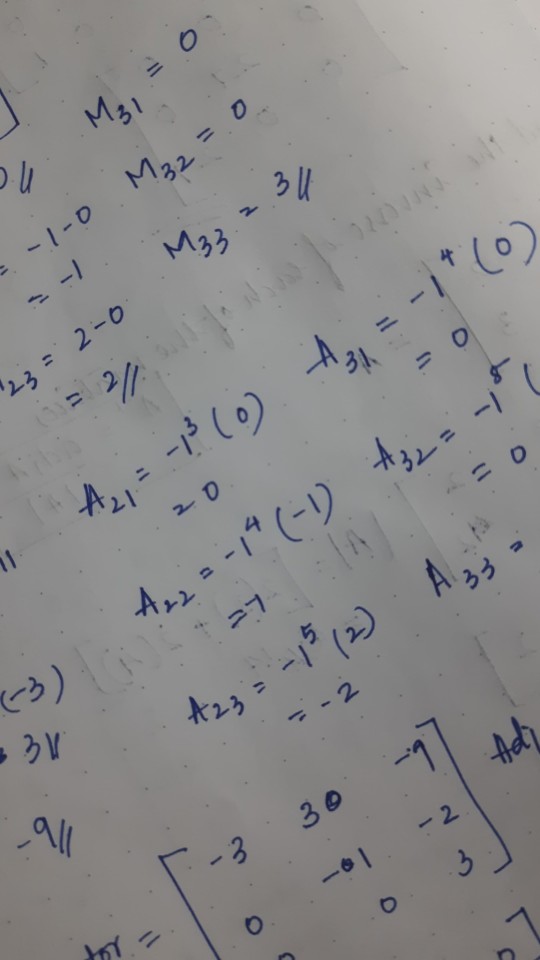

16/03/2024
To Do List:-
□ Write some Psychology Notes.
□ Check Physics Notes.
□ Check my Chemistry Notes.
□ Try to complete this week's Maths Homework.
□ Read a chapter from English.
Remarks:-
I am sooo bored 😴
Book of the Day:-
Reached the around 430/600 pages of 'The Godfather'. It is so good!
Song of the Day:-
So romantic..My heart flutters while listening to this!
#studyblr#study blog#desi studyblr#indian studyblr#study aesthetic#studyspo#study#studying#100 days of productivity#12th std#study hard#student life#student#study motivation#studygram#study notes#studystudystudy#school#science#song of the day#music recs#inkem inkem#sid sriram#telugu songs#Spotify
36 notes
·
View notes
Text
june 05, 2024. | 01/100 days of productivity.
i have online classes from 8 am in the morning till 3 pm. so, i attended all of three 2 hour long lectures and made notes. i have 2 months-ish worth of backlog because i started the classes this week, while the batch started way back in april lol.
after a little lunch break, i revised for a hour and then went to the gym. i got back after two hours and then i spent the evening studying business law’s chapter and bank reconciliation statement in accounts. my head was hurting like crazy and it’s only day one so i’m stressed how i’ll get through this. i also watched like 3 episodes of suits lol.
at night i wanted to study for another hour but instead i spent making content for my writersgram and writing my novel while listening to music.
i’d say i was productive and had a good satisfactory day xx
with love,
deeya.





#commerce#business#law#finance#univesity#school#study aesthetic#study blog#studyspo#studyblr#student#study motivation#100 days of productivity#100 days of studying#motivation#indian studyblr#indiancommercestudents#chartered accountant#accountancy#accounting#castudents#ca foundation#ca inter#ca final
21 notes
·
View notes
Text
i think growing up is just life repeatedly sucker punching you and saying bitch you thought things were gonna better lmao no you're so naive and stupid for having hope in 20 years the world will be flaming bag of garbage and no matter how hard you work you'll get eliminated at some point
#and then you just have to get up and keep living anyway because what else is there to do?#but man my heart keeps feeling heavier with every blow#2024 has literally been the worst year ever god personally too#like everytime i think it can't possibly get worse than this it does#i remember literally 9th jan i had such a horrible breakdown in an auto because the first friend i ever made#after school was leaving my work and therefore my life#9 days into the year. seriously. and i was so happy on 8th because it was my birthday#i don't know im trying hard to think okay this doesn't even affect me it's fine im privileged enough that even my own countrys politics#barely affects me#but just. india is already so behind in everything. if developed nations are doing shit like this then well#it will never get better right like who do we even strive to be#i want to get more into indian politics but my god. it's so horrifying and depressing all the time#like i remember resolving to follow politics closely few years ago and the first news#i read was about some minister talking about how girls skirts lengths IN SCHOOL is the reason boys do sa and boys will be boys etc etc#i know i could just follow business news stuff like that god knows it'll help in my field but it just. doesn't resonate with me doesn't#make me feel anything at all. like i so desperately want to care about ooh stock markets and how to grow your money etc etc#but when i think about being rich enough to invest idle money all i can think is sitting in my own home peacefully#drinking a glass of cold coffee and just being able to breathe freely because me and my sister used to joke in childhood#when dad went thru a coffee v bad for health phase and he wouldn't let us drink it so we would drink it very sneakily#at night when he was asleep or went out for an hour and make absolutely no noise while mixing the sugar. we said that we know#we'll* know we have achieved true freedom and happiness in life when we can peacefully drink cold coffee in the hall and not secretly#in the dead of night in our room#i don't even know what im talking about and my period is late again and nothing is working and my lazer focus#that i had built in the past few weeks is gone because suddenly im like what is the point????#i just don't understand how the fuck humans can fight over stupid fucking things like who is kissing who and who is doing what with their#body instead of focusing on collective issues like our planet is dying so fucking fast and every summer is getting impossibler to survive#i hate that the united states control the UN fuck this world fr man i hate being born in such horrible helpless times#like call me a kid or dumb or whatever but i cannot understand how MILLIONS of people do not#have sympathy for ppl around them and who don't care about the planet at all like how????? how did you grow up????#not trying to boast but this is so natural to me!!! didn't you make save water save earth posters in school!!! didn't anyone
8 notes
·
View notes
Text


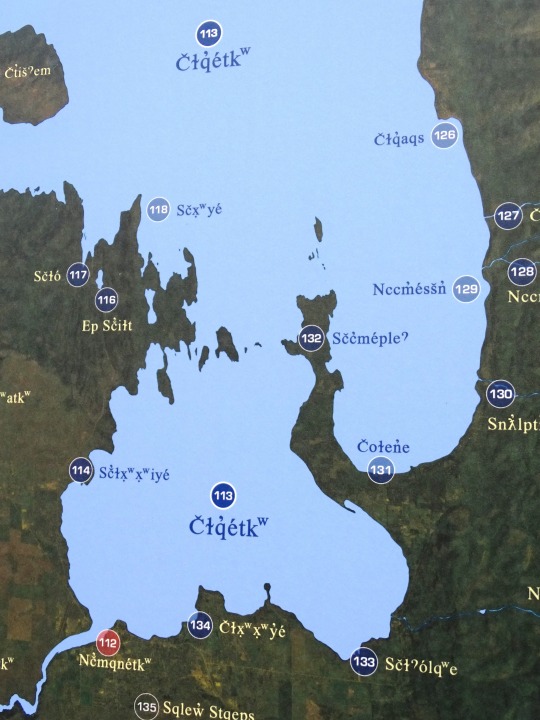



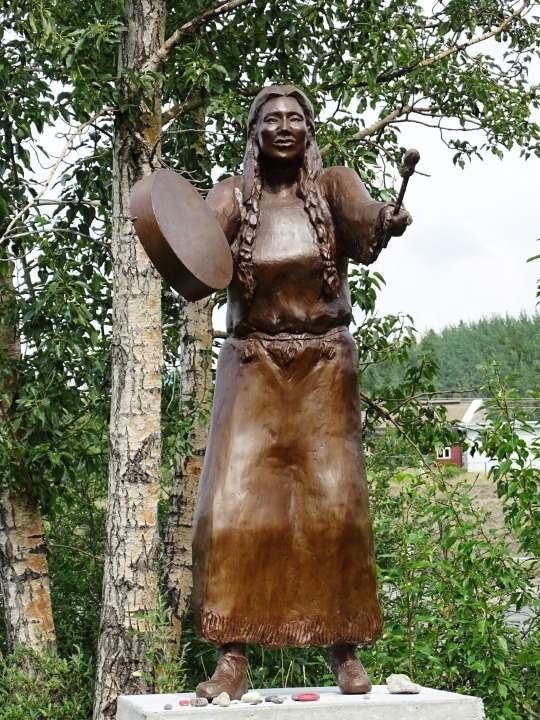
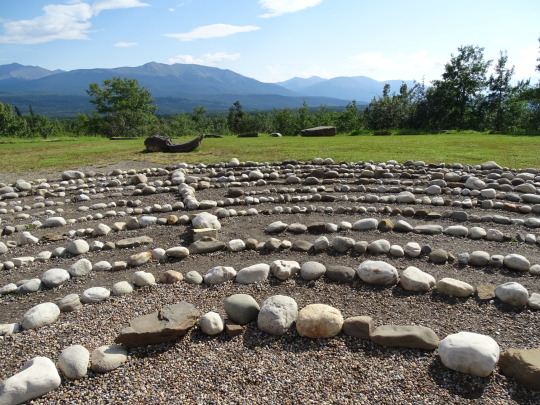



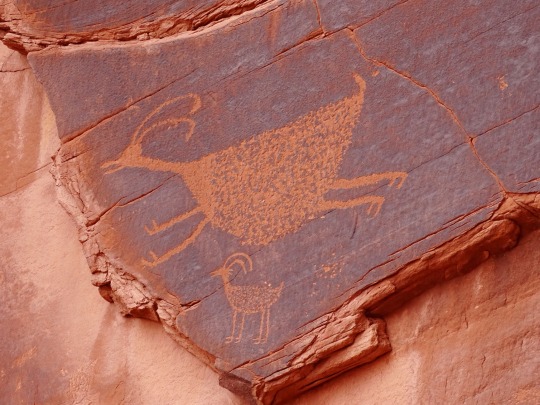





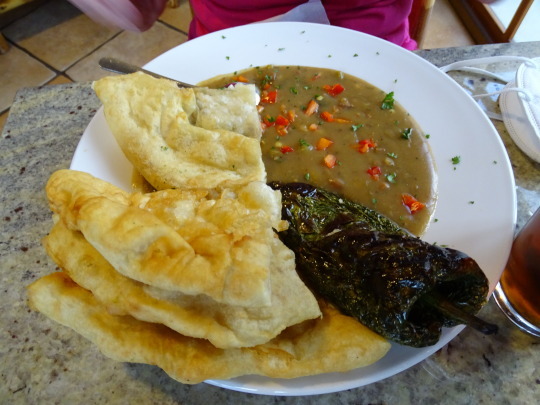
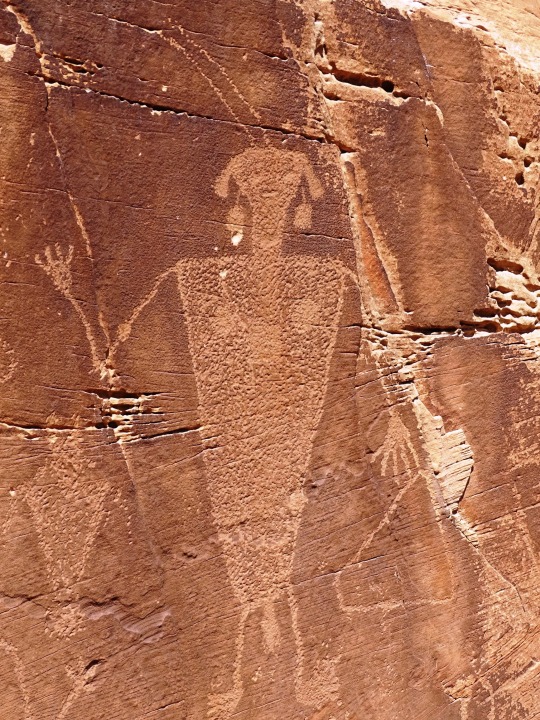




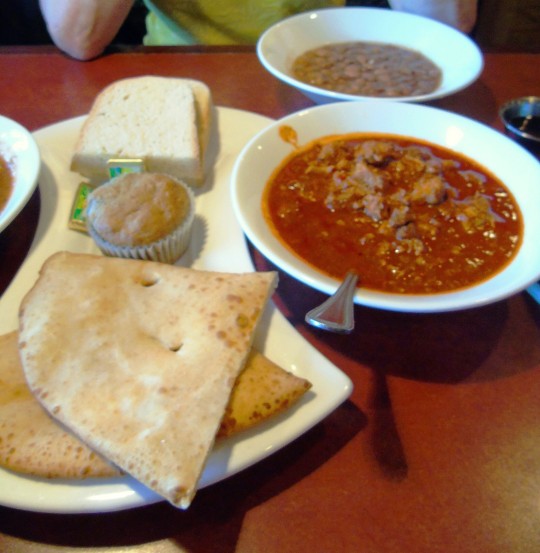

National Day of Mourning
The National Day of Mourning takes place on the fourth Thursday of November, this year it’s on November 28. If this date sounds familiar to you, it’s because the fourth Thursday of November also coincides with Thanksgiving in the U.S. Every year on the National Day of Mourning, Native American people in New England gather together to protest. To them, Thanksgiving serves as a reminder of the unjust treatment that Native Americans have received since the 1620 Plymouth landing.
History of National Day of Mourning
The National Day of Mourning reminds us all that Thanksgiving is only part of the story. Native Americans, since 1970, have gathered at noon on Cole’s Hill in Plymouth, Massachusetts, to commemorate a National Day of Mourning on Thanksgiving Day.
Pilgrims landed in Plymouth and established the first colony in 1620. As such, it’s the oldest municipality in New England. Many Native Americans, however, don’t celebrate the arrival of the Pilgrims and other European settlers. Thanksgiving, to them, is a brutal reminder of “the genocide of millions of Native people, the theft of Native lands, and the relentless assault on Native culture.”
They participate as a way to honor Native ancestors and the struggles of Native peoples to survive today. “It is a day of remembrance and spiritual connection as well as a protest of the racism and oppression which Native Americans continue to experience.”
The United American Indians of New England (UAINE) sponsors this event. They maintain that the Pilgrims arrived in North America and claimed tribal land for their own, as opposed to establishing a mutually beneficial relationship with the local inhabitants. UAINE members believe that these settlers “introduced sexism, racism, anti-homosexual bigotry, jails, and the class system.”
The National Day of Mourning generally begins at noon and includes a march through the historic district of Plymouth. While the UAINE encourages people of all backgrounds to attend the protests, only Native speakers are invited to give these speeches about the past, as well as current obstacles their people have overcome. Guests are asked to bring non-alcoholic beverages, desserts, fresh fruits and vegetables, or pre-cooked items. The protest is open to anyone, and has attracted other minority activists.
National Day of Mourning timeline
1998
No permit needed
UAINE receives permission from local authorities to march in protest without having to obtain a permit.
1997
Protests got violent
State troopers use force against protesters who gathered together to observe the 28th annual National Day of Mourning.
1970
National Day of Mourning began
The first annual protest for the National Day of Mourning takes place.
1620
Pilgrims arrived
English separatist Puritans, who had broken away from the Church of England, land at Plymouth Rock. Today we refer to them as Pilgrims.
National Day of Mourning FAQs
What really happened in 1621?
The Pilgrims celebrated their first successful harvest by firing guns and cannons in Plymouth. The noise alarmed ancestors of the Wampanoag Nation who went to investigate. That is how native people came to be present at the first Thanksgiving
Are federal offices closed on a national day of mourning?
U.S. government offices are closed on the National Day of Mourning due to the Thanksgiving holiday.
What happens on the National Day of Mourning?
Native Americans and supporters gather in Plymouth to “mourn our ancestors and the genocide of our peoples and the theft of our lands.”
How to Observe National Day of Mourning
Brush up on your history: Do you know much about the first Thanksgiving? Do some research online, stop by your local library, or watch a documentary that will help give you a better understanding of what Native Americans actually went through.
Learn more about the United American Indians of New England (UAINE): UAINE is responsible for helping the National Day of Mourning protest take shape. To observe this important day, take some time to learn about about the UAINE. It's a fascinating organization that has done a great deal to promote better treatment for the Native American people.
Attend a protest: Protesters gather on Cole's Hill, a location overlooking Plymouth Rock, in Massachusetts. Everyone is welcome to observe these gatherings, and recently, other minority groups have started to become involved in the events of this day.
4 Reasons To Thank Native Americans
They've been here a while: Native Americans have existed in what is now known as the United States since 12,000 BC.
Thank you for your service: Although they were not considered American citizens, over 8,000 Native Americans served in the military in World War I.
Your great-grandma is who?: Many of the first families who settled in Virginia trace their roots directly back to Pocahontas.
An important vocabulary lesson: A bunch of Native American words have made their way into the English language; for example, coyote, tomato, poncho, potato, and chia.
Why National Day of Mourning is Important
It serves as an important history lesson: Textbooks often glaze over the unjust treatment of Native Americans. The National Day of Mourning, however, is a reminder that the people native to the Americas have been the recipients of a great deal of unfair treatment. It's important to discuss.
It's a time to come together: For protesters, the National Day of Mourning serves as a time to rally together to advocate for what they believe in. UAINE has worked to improve relations between the government and native people.
It shifts our attention away from turkey: Yes, Thanksgiving can be a great day filled with tons of good food and time spent with loving family and friends. However, the mission behind the National Day of Mourning is to highlight that the Thanksgiving holiday is actually quite painful for some people. For quite a few Native Americans in New England, Thanksgiving marks a time when their ancestors were treated poorly.
Source
#MMIWG monument by Myrna Pokiak#Yellowknife#White Bird Battlefield Historical Landmark#The Gather-Ring by Manuel Báez and Charlynne Lafontaine#National Day of Mourning#28 November 20243#NationalDayofMourning#native american#Wabanki Canoe#Founding Fathers by Dale Faulstich#Jamestown S'Klallam Tribe#fourth Thursday in November#Unthanksgiving Day#travel#original photography#vacation#tourist attraction#Canada#USA#First Nations#Labyrinth Park#Monument Valley Navajo Tribal Park#Dinosaur National Monument#Mesa Verde National Park#Finding Peace Monument by Halain De Repentigny#Survivors of Whitehorse Indian Mission School by Ken Anderson#Two Brothers Totem Pole by Jaalen and Gwaai Edenshaw#Jasper National Park
4 notes
·
View notes
Note
critical thinking is taught in literature and/or philosophy classes you're just usamerican
king i think you might be the one lacking reading comprehension skills i'm a philosophy undergrad, i was raised in iran, i live in the UK where we ARE taught to think critically, have never once been to the usa, and i'm talking from my own perspective as an asian person combined w that of all my peers from diff asian countries who all have had the same experience/perspective on this . if you read the tags on that post i say clearly that i'm iranian :)
#asks#anon#im sorry being called USAmerican was not on my bingo card this is so funnyyyyy#in a lot of asian countries our systems of education are based on memorisation rather than actually analysing and dissecting and THINKING#in farsi literature class i had to just memorise/recite old poetry etc. my friend who went to school in hong kong#says the same . my indian friend had a similar experience. in maths we just learned formulae or processes for answering questions#algorithmically. once i moved to the uk i was baffled and pleasantly surprised that A) i didnt have to work like 6-8hrs on homework every#day and B) that we were told WHY things were the case as well as the fact that they are. if we asked why we got an answer.#i think u may be deeply ignorant on this anon ngl
14 notes
·
View notes
Text
imagine the teacher asks you to draw the pic of an aadhaar card (don't ask why she did) and everyone's obviously like we don't remember what an aadhaar card looks like exactly and this guy just pulls out his aadhaar card from his bag and starts drawing.
LIKE WHO KEEPS AN AADHAAR CARD CASUALLY IN THEIR SCHOOL BAG
#aquana's first words were#tu school ke baad kahan jaata hai?#lmfao#desiblr#desi#desi tag#being desi#desi memes#desi meme#indian#indian memes#desi dark academia#desi stuff#lmfao pls#being indian#school days#indian schools#desi school
37 notes
·
View notes
Text
not a romcom but a qpr-com in which an indian american (of the asian variety) and an american indian (of the indigenous variety) open a restaurant called Indian^2 where they have both cuisines
it would be fluffy little story about this genius idea of a business venture but also an exploration of culture and the not-white US experience and also the epicness of qprs
in the end the two of them end all neocolonialism by the power of Restaurant
#ITD BE THE ULTIMATE INDIAN RESTAURANT#also at least one of them is wlw i dont make the rules#tbh i would make these ocs but i know embarrassingly little about indigenous culture (unless someone wants to make an oc with me ..... :3?)#which always struck me as stupid since i Live Here#i mean all i learned in school was the name of the people that are indigenous to my area#and that they had acorn porridge#and also it was in elementary school#i recently came about the language spoken in my area specifically and one of these days ill learn it but colonisation frustration aside#imagine just having a restaurant with both indian and indigenous food and just going SUCK IT COLUMBUS#theres also an interesting difference with like#modern immigrants/children of immigrants and indigenous ppl and how the US treats us both respectively#also how as communities we dont have any overarching solidarity or anything#like you see videos about “that one black and asian duo” or that one “chinese and filipino duo” but never that one “indian and indigenous d#i mean wasted potential much#yappery aside this was just a thought#desi tag#indigenous#indigenous american#desiblr#ocs#coolio#qpr
4 notes
·
View notes